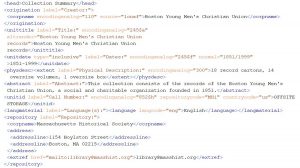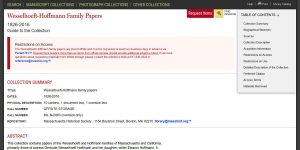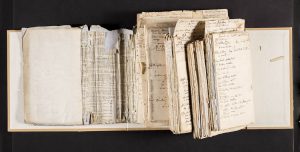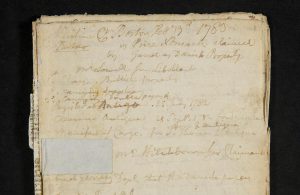by Sara Georgini, Series Editor, The Papers of John Adams
For John Adams, the end of the American Revolution ushered in a difficult peace. This saga plays out in the 301 documents that compose Volume 18 of The Papers of John Adams, now available in our free Adams Papers Digital Editions, chronicling his public life from December 1785 to January 1787. His tenure as the first American minister to Britain from 1785 to 1788, which he seized on as his dream job—and a post that Adams heavily lobbied for in congressional circles—felt fruitless by late December 1785. After months of court presentations and dinner-table diplomacy, Adams could not persuade the British ministry to settle prewar debts, restore lost property, or normalize commercial relations. His face-to-face encounters with the British ministry ground to “a full stop.” With trademark candor, Adams reported home that King George III was too “obstinate” and possessed an “habitual Contempt of Patriots and Patriotism,” while the new prime minister, William Pitt the Younger, “oscillated like a Pendulum” on key questions of foreign policy. Adams projected that Anglo-American relations would continue suffering in a state of “contemptuous silence” and neglect.
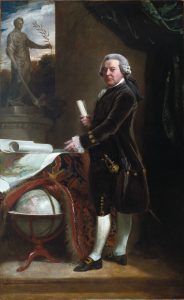
The British newspapers made it worse. Editors printed a series of attacks and misrepresentations of both American news and John Adams that his wife Abigail denounced as “false…false as Hell.” A turning point came in February 1786. The British rejected Adams’s memorial requesting their evacuation of posts on the American frontier. Adams, left to uphold a treaty that he never found satisfactory, saw that he was mired in a system that stonewalled American interests. This type of diplomatic toil, Adams wrote to friends back in New England, was akin to “making brick without straw.” By January 1787, Adams had resigned his commissions, ready to return home after a decade’s worth of service. What, then, did he really accomplish in Europe?
Volume 18 of The Papers of John Adams tells us a new story. For, between 1778 and 1788, as he moved from The Hague to Auteuil and from London to New York, John Adams formed an extraordinary and little-known record of cultural diplomacy. First, he recruited allies and funds to the American cause. Then Adams urged them to amplify the history and culture of the new nation. Europe’s “Men of Letters…who are possessed of the best Hearts and most virtuous Principles, are anxious to assist Us in the great Work We have to do,” he wrote to the Scottish educator George Chapman in 1785. Entrusted with dual commissions to manage Dutch loans and craft commercial agreements with the nations of Europe and North Africa, Adams stuck to congressional instructions. He worked on negotiations related to Anglo-American economic relations, as well as proposed treaties with Morocco (successful) and Portugal (not). We used annotation and illustrations to narrate his work, including an image of a rare, Arabic-language manuscript in the Adams Papers.
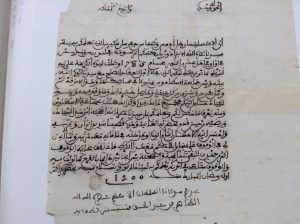
Literature and religion were intellectual pursuits that Adams enjoyed dabbling in. History was his passion. Three years’ posting to London planted Adams in scenery that he had only read about. On his days off, Adams tore through England’s landmarks. He made quick tours of the countryside with Abigail or Thomas Jefferson in tow. He relished seeing the cottage where Shakespeare metered his sonnets, and he breathed in the lush green estates of landed gentry. Ever a fitful diarist, John Adams recorded the sites with Whiggish approval of the country seats’ symmetrical topiary, classical statuary, and working farms. In his letters home, John focused on historic sites. He explored key episodes of the English Civil War through visits to the battle sites of Edgehill and Worcester. Adams, ever forthright and opinionated, was more of a tourist than a diplomat on such trips. At the latter venue, Adams felt “provoked” to remind the local residents that “this is holy Ground, much holier than that on which your Churches stand.”
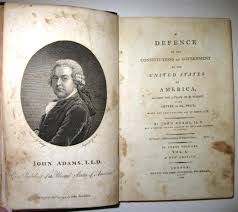
There was more to John Adams’ life than diplomacy. Volume 18 reveals the fiftysomething minister in a moment of change. He witnessed the marriage of his daughter, Abigail 2d, to William Stephens Smith; promoted the ordination of American Episcopal bishops; and made his final tours of Europe. During his time in London, he also drafted the first volume of his Defence. With his mission at a standstill, he had ample time to devote to the task. Adams’ opening salvo pieced together or silently quoted from historical examples, mainly drawn from case studies of Italian republics, to show that balanced government prevented civil war. Adams argued that America needed such a structure in order to sustain the hard-won republic. To learn more about his blueprint for the nation, you can start reading Volume 18 of The Papers of John Adams here.
The Adams Papers editorial project at the Massachusetts Historical Society gratefully acknowledges the generous support of our sponsors. Major funding is provided by the National Endowment for the Humanities, the National Historical Publications and Records Commission, and the Packard Humanities Institute. The Florence Gould Foundation and a number of private donors also contribute critical support. All Adams Papers volumes are published by Harvard University Press.



